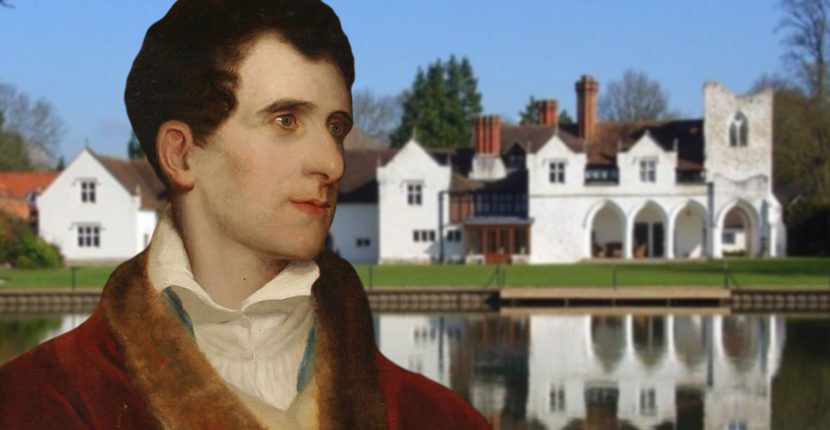History does not record a single event of interest that took place within the abbey walls while Cistercian monks actually inhabited Medmenham between 1204 and 1536. It’s what happened to a woman around the time of its founding and to a man 200 years after its dissolution that spark interest–and, in the case of what happened in the 18th century, a notoriety that lasts up to today.
The person responsible for the abbey’s existence was Isabel de Bolebec, a woman of strength who was determined to have a say in her own life. This was no small feat in the early 13th century, especially for an heiress.
The de Bolebecs were a family that possessed extensive land at the time of the Domesday Book in 1086, mostly in Buckinghamshire. Isabel was the daughter and co-heiress of Hugh de Bolebec and is believed to have been born shortly before his death in 1165. Her first husband was Henry de Nonant, Lord of Totnes; they had no children together.
At some point Isabel granted lands to the abbey of Woburn, an existing house of Cistercian monks, and they decided to expand, using those lands. Medmenham Manor had belonged to her father, and she decided to bestow the land between the manor and the Thames to the Cistericians. She was clearly a pious woman who believed in religious patronage–she is best known for being a major benefactress of the Dominican order in England. In 1204 a colony of Cistercians began to live in the newly constructed abbey on the Thames.
In 1206, Isabel’s husband died, and she petitioned King John for the right to not be married again or, if she did, to choose the man herself. She was about 40 years of age. Nearly all marriages of heiresses were arranged, with their fortunes as rich prizes for the king to bestow on men who he wished to favor. Some of these marriages were unhappy, even traumatic. Henry I is known to have charged rich widows for the privilege of remaining single. Sometimes the women had to pay the king in order for him to release back to them their own inheritances!
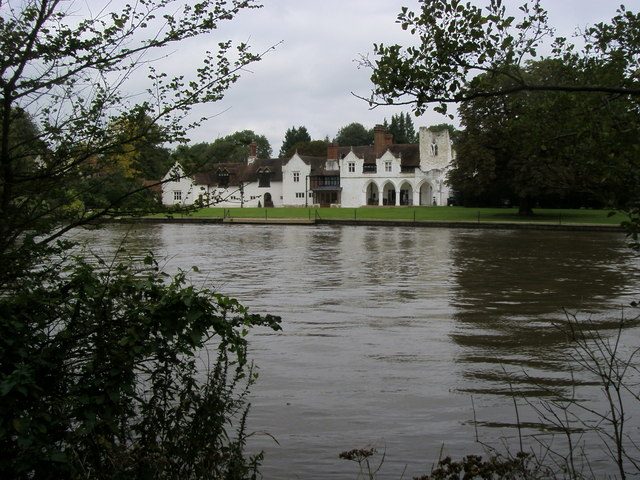
Isabel paid King John 300 marks and three palfreys (horses) for the right to marry the man of her choice. He was Robert de Vere, a man her own age from a family as old and prestigious as the de Bolebec’s. They had a son right away, naming him Hugh, and in 1214 her husband inherited from his brother the earldom of Oxford. The de Vere’s managed to hold onto the title of Earl of Oxford until 1703, all of them descended from Isabel.
Our story then jumps to the 16th century and the Dissolution of the Monasteries. When Henry VIII broke with Rome and began to dissolve the monasteries, the smaller ones were broken up first. Medmenham Abbey definitely fell under that category. In July 1536, the abbot and only one monk lived there–when they were evicted and pensioned off, the abbot received a pension of 10 marks. The Valor Ecclesiasticus put the abbey, the small village lying a quarter-mile away, and the parish church at an estimated combined value of 20 pounds, 6 shillings.
Henry VIII granted the stone buildings and land to Thomas and Robert More; it passed to the Duffield family in the late 16th century. Two centuries later, Francis Duffield leased the abbey to one Sir Francis Dashwood. It was then that everything changed.
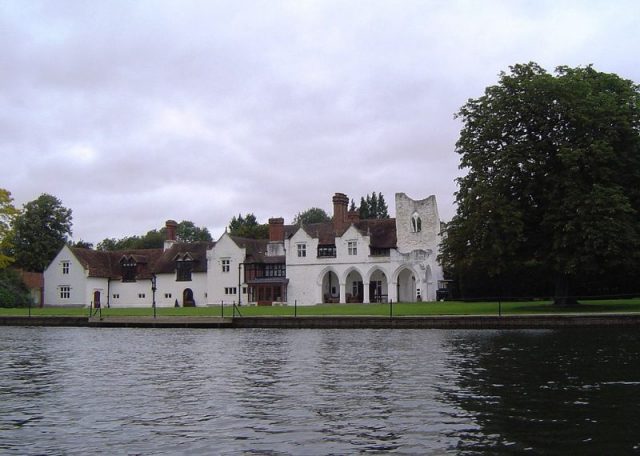
CC BY-SA 3.0
Sir Francis Dashwood was born in London in 1708, the only child of a baronet who made a fortune in trade with Turkey. Sir Francis inherited his estates, title and money at the age of 15. He went on the Grand Tour of Europe in high style. Gossip circulated that along with a passion for art and literature, the young baronet formed a fondness for brothels.
By the age of 18, Dashwood was a prominent member of the Dilletanti Society, devoted to celebrating the values of ancient Rome and Greece. He spent a great deal of money turning his father’s country estate, West Wycombe Park, into an Italianate villa that eventually became known as one of the most beautiful houses in England.
He was obsessed with private societies, and in 1752 he formed what he dubbed the Brotherhood of St. Francis of Wycombe with likeminded friends such as the Earl of Sandwich. He soon decided a discreet location was needed, and Dashwood poured money into Medmenham Abbey, which was near West Wycombe Park. The abbey was easy to reach by boat from London.
The medieval ruin was renovated to resemble a Gothic structure with this theme written in stained glass at the entrance: Do What Thou Will. Dashwood and his friends came up with a new name for themselves: the Monks of Medmenham. It was later that their most famous name sprang up: the Hellfire Club. Among its rumored members: the Earl of Bute, Frederick Prince of Wales, the Duke of Queensbury, and even, as a visitor, Benjamin Frankin.
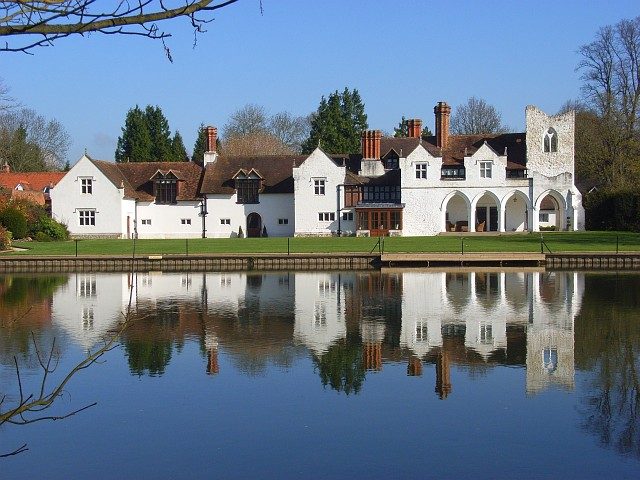
What transpired inside the onetime abbey of Cistercians? Did the “monks” merely read poems and get drunk? Or were these gatherings blasphemous and pornographic, with Georgian aristocrats performing anti-Christian rituals and entertaining prostitutes dressed as nuns? Another theory was that the debauchery was a guise for political discussions, since many were members of the government opposition. Although a well-known hater of the Catholic Church, Sir Francis was dogged by suspicion of being a secret Jacobite.
London gossiped about little else but the secret society until the scandal overwhelmed the Medmenham community. Although Dashwood employed many people in the area, he must not have been popular after he and the Earl of Sandwich released a monkey into the parish church during services, and watched the worshippers flee, screaming. Dashwood took the Hellfire Club underground–literally. He moved the gatherings out of the abbey and into a series of tunnels he’d had carved out of the chalk and flint of West Wycombe Hill.
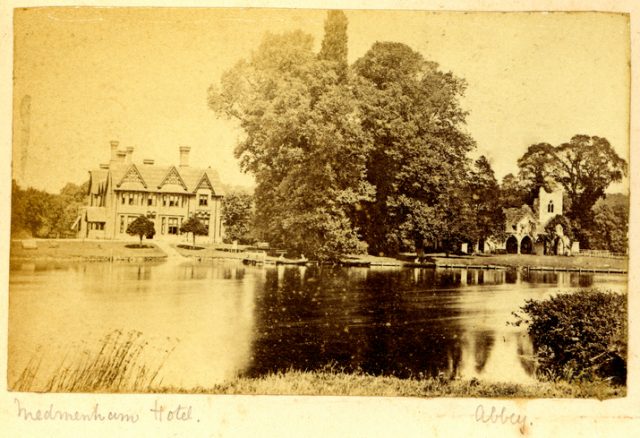
The reports of the members’ misdeeds grew even more shocking there. Amazingly, Dashwood, who inherited the title 15th Baron Le Dispenser, served in Parliament and rose to Chancellor of the Exchequer although, as was agreed upon by all: “Of financial knowledge he did not possess the rudiments.”
The Duffield family took back the abbey and sold it to the Chief Justice of Chester. It is unknown what the new owner did to Dashwood’s Gothic creation. In 1898 the abbey was “restored” by a Mr. Hudson, and in the early part of the 20th century was owned by an army colonel. It is now the site of a prosperous waterfront property in private hands. Nothing of the abbey remains.
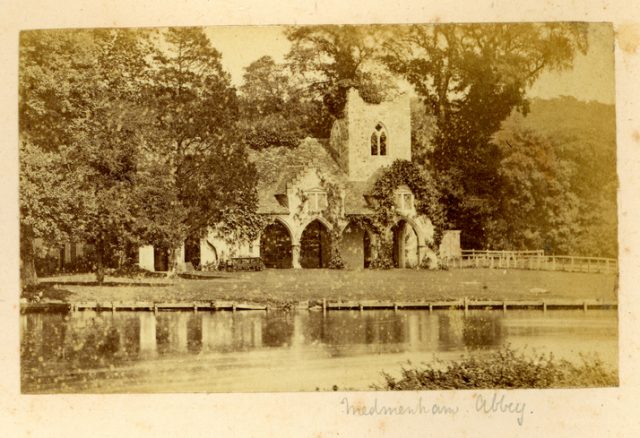
The Hellfire Club permeated the culture, popping up in new forms all over England and Ireland, and references can be found in novels, films, and songs. Often there is a whiff of blasphemy, of dark doings taking place in an abbey ruin. It didn’t help that Alistair Crowley, the notorious occultist, adapted the Hellfire Club’s “Do What Thou Wilt” to be a personal motto.
But it is Sir Francis Dashwood’s undeniable taste that brings the story from hell back to a bit of heaven. West Wycombe Park, his estate, is owned by the National Trust, although the present head of the Dashwood family lives in part of it with his family. The interiors are used by many film and TV companies today, including Downton Abbey‘s. When fans looked upon certain aristocratic rooms inhabited by the show’s characters, they are catching a glimpse of the man who shocked Georgian society to the core.
Nancy Bilyeau has written a trilogy of novels set in the court of Henry VIII: ‘The Crown,’ ‘The Chalice,’ and ‘The Tapestry.’ The books are for sale in the U.S., the U.K., and seven other countries. For more information, go to www.nancybilyeau.com.
